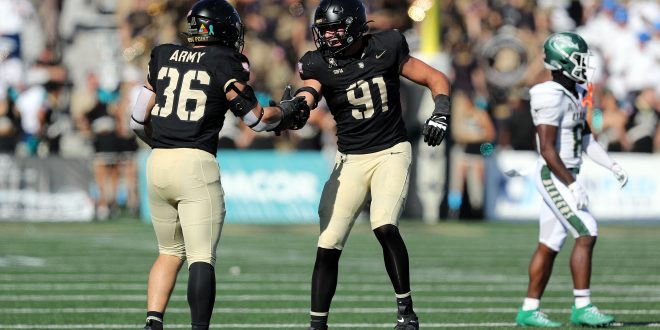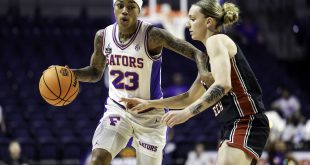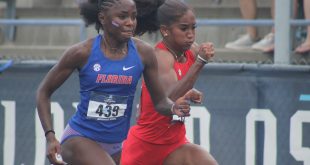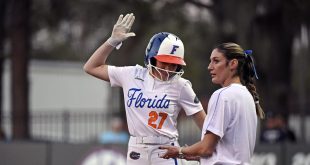For the first time in more than 60 years, the Army Black Knights (6-0) and the Navy Midshipmen (5-0) are simultaneously ranked in The Associated Press Top 25.
https://twitter.com/armynavygame/status/1845555939279077378?s=46&t=XYU3ADK0sr63Hu8uzstpYA
With both No. 23 Army and No. 25 Navy sitting at the top two conference spots, they could meet in the American Athletic Conference title game later in December. That would be just eight days before facing off in the annual Army-Navy game.
The last time both teams were ranked for the annual Army-Navy game was in 1957 when No. 8 Navy defeated No. 10 Army 14-0, 15 years before the Commander-In-Chief’s trophy was even created. Both teams are just one win away from bowl eligibility. That’s a huge difference from last year when both teams had the 113th and 125th-ranked offenses, combining for an 11-13 record.
This week’s rankings mark history for these two programs and symbolize a resurgence of military football programs into the national spotlight despite modern obstacles.
Resurgence of Military Academies
“Do they [Navy] still have a football program at that school?” Army head coach Jeff Monken joked on the Pat McAfee show.
https://twitter.com/espn/status/1846596775240511940?s=46&t=XYU3ADK0sr63Hu8uzstpYA
Because military academies can’t offer scholarships, they’ve historically been limited by who they can recruit. Unlike every other FBS team, transfer students must meet the strict academic, physical and military qualifications required for academy admission. That includes post-graduation service (After also completing four years at the academy).
These players have to maintain a certain weight due to military guidelines, which means their lineman tend to be undersized compared to most opponents. This forces them to take an extremely unique approach to the game of football.
“Why Do Military Academies Run So Much?”
Dating back to the early 1900’s, military academies have historically relied on a ground-and-pound approach to compensate for physical limitations. Coaches rely on offensive strategies that maximize the strengths of their rosters by using variations of the option offense or spread formations.
That’s why teams like Army and Navy have (unsurprisingly) found themselves as the last two teams in average passing attempts per game. Army has averaged 7.4 pass attempts per game and Navy with 12.3, paling in comparison to the typical 30-40 passes from other programs.
Despite those mind-boggling numbers, there are other bright spots. With one fumble and no interceptions, Army leads the nation in turnovers lost. Navy comes in second with zero fumbles and two interceptions.
Domination on the Ground
They aren’t just running; they’re dominating the ground.
Army is No. 1 in rushing touchdowns (26) and yards per game (368) and is on track to be the most by any offense in over a decade. They also sit at No. 2 in yards per rush with 6.87. That’s behind only Boise State who is led by Heisman frontrunner, running back Ashton Jeanty (14.3 yards per carry).
Navy has been extremely efficient on the ground as well, having the No. 2 redzone offense, scoring 18 touchdowns on all 18 trips. They’re also No. 2 in rush yards per game with 295.6.
“You’re playing for everyone that has gone before you in the Navy, at the Naval Academy, really in any service, and you’re playing for them each week.”@NavyFB quarterback @HorvathBlake on the Heisman Trophy Podcast.
Entire interview here ▶️ https://t.co/9OWArh4QKk pic.twitter.com/Fgwc9bf2MI
— The Heisman Trophy (@HeismanTrophy) October 10, 2024
The Road Ahead
Week 8: Oct. 19
- No. 23 Army vs Eastern Carolina @ 12 p.m.
- No. 25 Navy VS Charlotte @ 3:30 p.m.
 ESPN 98.1 FM / 850 AM WRUF ESPN 98.1 FM / 850 AM WRUF
ESPN 98.1 FM / 850 AM WRUF ESPN 98.1 FM / 850 AM WRUF




